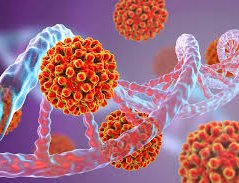
The majority of the Nepalese have either suffered from or heard about Jaundice. Jaundice involves a yellowish pigmentation of the skin and whites of the eyes. Actually, jaundice is not a disease, per se, but rather a sign of an underlying medical condition in which the body makes too much bilirubin. One of the reasons for excess bilirubin and yellow pigment on skin and eyes or jaundice is hepatitis. Hepatitis is an inflammation of the liver. The most common cause of hepatitis is a viral infection, but there are other possible causes of hepatitis such as autoimmune conditions, alcohol, medications, and toxins.
There are five types of viral hepatitis: hepatitis A (HAV), hepatitis B (HBV), Hepatitis C (HCV), hepatitis D(HDV)and hepatitis E (HEV). The HAV and HEV are transmitted through the ingestion of contaminated food or water,(the fecal-oral route) whereas HBV and HCV are transmitted primarily through needle sharing, sexual contact, perinatal route, and exposure to infected blood. Hepatitis D occurs only if one has hepatitis B.Most of the HAV and HEV cases are acute and self-limiting whereas 70–80% of people who are acutely infected with HBV and HCV progress to chronic hepatitis. And chronic viral hepatitis is dangerous because it can lead to cirrhosis and liver cancer. Vaccines are available for the prevention of HAV and HBV. The vaccine against HBV also protects against HDV. Vaccine for HEV is licensed in China but not yet approved by FDA, however, no vaccine is available for HCV.
In Nepal, HEV and HAV are the most prevalent. In the last two decades, Nepal has experienced two major HEV epidemics:2005-2006 in Kathmandu and 2014 in Biratnagar. Other small outbreaks have been reported in prisons, army camps and schools. The prevalence of HBV and HVC is low in Nepal with HCV mostly seen amongst injection drug users and HIV patients. Recently WHO SEARO announced Nepal as one of the first four countries (the other three are Bangladesh, Bhutan, and Thailand) to achieve HBV control. This is definitely promising. However, one should be cautious because cases of hepatitis B and C could be underreported as HBV and HCV are silent killers that wait decades before showing symptoms. The fact that most people do not have symptoms and tend not to have them for decades until they develop chronic liver disease has contributed to the problem of poor diagnosis, inadequate treatment, and risk of transmission to others.
“World hepatitis day” is celebrated on July 28 and this year's theme is “find the missing millions”.The World Hepatitis Alliance’s (WHA) has been campaigning with this theme for the last two years to address the barriers to hepatitis diagnosis by putting civil society organizations and the affected community at the heart of the solution. This year’s campaign may be affected by the lockdown or social distancing due to the Covid-19. In this taxing and uncertain times, one place that could help community awareness is pharmacies.
Pharmacies are the most accessible and affordable health care facility for people in urban areas. Since people living in urban areas like Kathmandu, Biratnagar are at increased risk of hepatitis, pharmacies can be instrumental in educating the general public about hepatitis. “Pharmacists” or the drug retailer at the pharmacy counter can play an important role in the hepatitis campaign through the following initiatives:
- Identify At-Risk Patients and Encouraging Screening
Because not everyone shows symptoms, identifying who is at risk and encouraging screening is critical. However, when people come to the pharmacy counter complaining about symptoms of jaundice, loss of appetite, fever, fatigue, they should be advised to see a doctor and screen for hepatitis.
2. Encourage Vaccinationsand Personal Hygiene
The Centers for Disease Control and Prevention (CDC) recommends the HAV vaccine for children 1 year of age and the HBV for infants at birth. However, people at any age (who are at risk and want to be protected) can get vaccinated against HAV and HBV. Pharmacies can encourage high-risk group individual people to consult doctors and receive A and B vaccinations.
Additionally, they can counsel people to practice good personal hygiene and avoid eating at roadside stalls to reduce A and E transmission. Pharmacies can also increase public awareness by advising people to avoid high-risk activities such as needle sharing tattooing, and unsafe sex to prevent HBV and HCV.
3. Distribute Educational Resources
Hepatitis B and Care referred to as “silent epidemic” because millions of people are living with it unknowingly and transmit the infection to others. These people will not know until they are screened for the virus, or until their liver disease progresses to cirrhosis or cancer. As the most accessible healthcare delivery, pharmacies can educate the general public about HBV and HCB and explain how these silent epidemics can progress to cirrhosis and also unknowingly spread to others. Pharmacies can provide information on hepatitis screenings and vaccinations: through talking to clients or patients, distributing posters, pamphlets, social media, and encouraging colleagues to do the same.
4. Year-round involvement
Not only on a designated day, but pharmacies can also get involved year-round and help spread awareness through various means. The World Hepatitis Alliance provides materials, such as posters and social media graphics, which can be used to spread hepatitis information across the public.
It can be challenging to prioritize a public health initiative like hepatitis awareness when the world is reeling with COVID-19 pandemic. But we will not achieve the reduction or eventual elimination of viral hepatitis without massive awareness, screening, and vaccination. Pharmacies through their public awareness initiatives can educate people and motivate them to get hepatitis screening and vaccination.
Rawal is a PhD Student & Graduate Assistant in the Department of "Pharmaceutical Health Services, Outcomes, and Policy (PHSOP)" at the University of Georgia.













